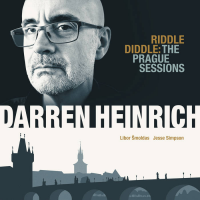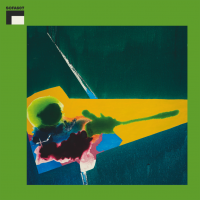Home » Jazz Articles » Album Review » Ron Surace: Trio City 2: The Return of the Trio
Ron Surace: Trio City 2: The Return of the Trio
Tackling straight-ahead standards for the second time might sit well with the Saturday night piano bar crowd, but it can be a recipe for disaster when dishing out the same fare to jazz listeners who have repeatedly heard these tunes deconstructed and reconstructed, demystified and re-mystified. What a welcome relief, then, that this trio gives such a fresh treatment to these familiar tunes.
Surace's style, technically and expressively, is very similar to that of Bill Evans, though in the past many critics have made an equally strong case for Erroll Garner. "Image," one of the Surace originals, and "Until the Real Thing Comes Along" are particularly Evans-like in the sense that he judiciously plucks clusters of notes from a larger melodic pool on the fly. Sometimes he draws these clusters out for simple examination; sometimes he bundles them together in arpeggiated rolls and chordal flourishes. It's neither minimalist nor impressionistic nor baroque, rather a seamless conflation of the three. Surace understands the art behind pause and hesitation (so did Sinatra and Monk; less gifted musicians tend toward calculated, stop-start, seasick motions), as he demonstrates on these two tracks as well as "I'm Beginning to See the Light," "Deed I Do" and "Cabin in the Sky." Like Brubeck, he also enjoys testing the elasticity of a phrase, often while mid-swing.
Pavkovic's brushwork on "Caravan"—most noticeable during his solo—is bell-clear and appropriately locomotive; Aoki's bass line is wriggling, snakelike. Together the rhythmic pair lay down the winding track on which Bill Evans' "Funkallero" runs. Caught up in the vitality and coherence of these performances, it would be easy to overlook the fact that the sound quality on Trio City 2 is utterly pristine.
Nitpicks? Trio City 2 is as long as Trio City. Seventy minutes. Concluding around "Sister Sadie" would still give listeners more than enough to enjoy and digest. But this seems to be complaining about too much of a good thing—"good" in this case being a criminal understatement.
Track Listing
I'm Beginning to See the Light; Caravan; Deed I Do; Image; Until the Real Thing Comes Along; Wrap Your Troubles in Dreams; My Foolish Heart; Softly As In a Morning Sunrise; Cabin in the Sky; Sister Sadie; Skylark; Funkalero; I'll Be Around; Here and Now.
Personnel
Ron Surace- piano; Tatsu Aoki- bass; Dave Pavkovic- drums.
Album information
Title: Trio City 2: The Return Of The Trio | Year Released: 2004 | Record Label: Southport Records
Tags
PREVIOUS / NEXT
Support All About Jazz
 All About Jazz has been a pillar of jazz since 1995, championing it as an art form and, more importantly, supporting the musicians who make it. Our enduring commitment has made "AAJ" one of the most culturally important websites of its kind, read by hundreds of thousands of fans, musicians and industry figures every month.
All About Jazz has been a pillar of jazz since 1995, championing it as an art form and, more importantly, supporting the musicians who make it. Our enduring commitment has made "AAJ" one of the most culturally important websites of its kind, read by hundreds of thousands of fans, musicians and industry figures every month.



















